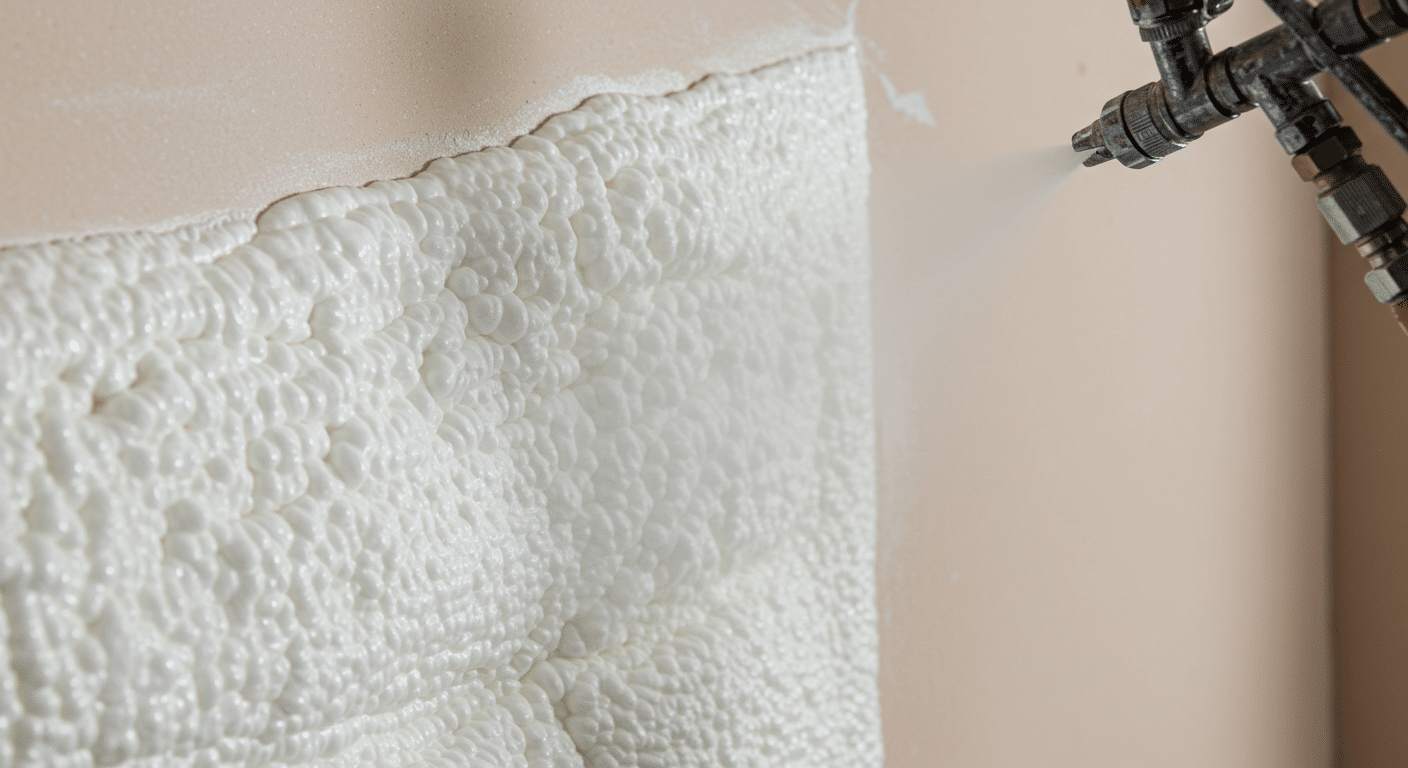
Spray foam insulation is moderately environmentally friendly, depending on the type and formulation. Closed-cell spray foam traditionally used high global warming potential (GWP) blowing agents, but newer low-GWP products significantly reduce environmental impact. Open-cell foam generally has lower embodied energy and uses water-based blowing agents. However, spray foam is made from petroleum-based chemicals and is not biodegradable, raising concerns about end-of-life disposal. When properly installed, it enhances energy efficiency and reduces carbon emissions, often offsetting its manufacturing impact over time.
Key Factors Affecting Spray Foam Insulation Sustainability
| Factor | Impact on Sustainability | Notes |
| Blowing Agent Type | High or Low GWP | Low-GWP agents (e.g., HFOs) reduce climate impact |
| Foam Type | Open-cell = Lower Impact | Closed-cell uses more material and energy to produce |
| Energy Savings | High | Significant long-term reduction in heating/cooling emissions |
| Material Composition | Petroleum-based | Not biodegradable; derived from fossil fuels |
| Installation Waste | Moderate | Overspray and trimming generate non-recyclable waste |
| Durability/Lifespan | Positive | Long-lasting insulation reduces need for replacement |
| End-of-Life Disposal | Negative | Difficult to recycle or dispose sustainably |
Spray Foam Insulation: Pros and Cons

Pros
- Significantly reduces energy use and carbon footprint
- Long-lasting with no need for replacement
- Low-GWP options now available
Cons
- Made from non-renewable, petroleum-based chemicals
- Not recyclable or biodegradable
- Older versions may use high-GWP blowing agents
Energy Efficiency vs. Environmental Cost of Spray Foam Insulation
| Aspect | Energy Efficiency Benefit | Environmental Cost |
| Production Process | Not applicable | High energy use, petrochemical-based, greenhouse gas emissions |
| Operational Impact | Cuts HVAC energy use by up to 50% | Reduces fossil fuel dependence and emissions |
| Lifespan | Long-lasting (20–30+ years) | Fewer replacements reduce resource use |
| Waste Management | Efficient use reduces long-term waste | Installation waste is non-recyclable and disposal is difficult |
| Sustainability Practices | Enhances green building performance with proper use | Depends on low-emission products and eco-conscious installers |
Environmental Impact of Blowing Agents
A major sustainability factor in spray foam insulation is the type of blowing agent used. Traditional hydrofluorocarbons (HFCs) in closed-cell foam had a very high GWP, contributing substantially to climate change. However, modern formulations often use hydrofluoroolefins (HFOs) with drastically lower GWP values. Open-cell foams generally use water as a blowing agent, making them more eco-friendly by default. Homeowners should verify that their installer uses low-GWP foam and seek products certified by programs like GREENGUARD or Environmental Product Declarations (EPDs).
Spencer is a Google ranking expert and SEO consultant who has helped businesses in the spray foam marketing industry achieve their online marketing goals. Spray Foam Genius Marketing has a proven track record of success, having achieved some impressive results for his clients.

